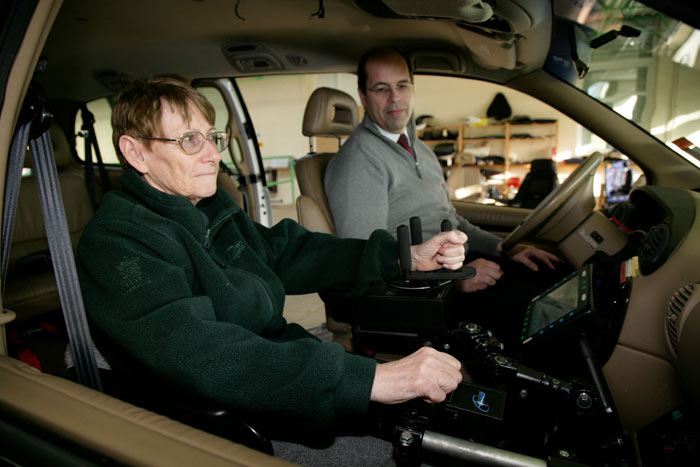QEF has been helping disabled people to learn to drive for years. They were kind enough to pass on their tips for potential new drivers.
The QEF Mobility Centre is specifically set up to support people with mobility and transport requirements and also to train approved driving instructors in how to teach people with disabilities to drive. QEF Mobility not only supports learner drivers with a disability, but also those who want to return to driving after acquiring a disability from accident, illness or age.
Everybody is Different
QEF accept that even people with very similar medical conditions or disabilities may have very different support requirements. They work from a positive perspective and angle their thinking towards how they can support people and help them towards learning to drive.
Assessment
This is the first step and allows the team at QEF to start to understand your needs and to think about potential solutions. The process starts with an interview and moves on to a physical and cognitive assessment with an occupational therapist on a static rig.
The static rig mimics a car’s seating and control but is firmly bolted to the floor. It’s effectively a simulator that can record data on the ‘driver’s’ responses and so on. It can measure cognitive, visual and physical tolerances and whether a person has the physical strength and fine control to make the intended physical movement to operate vehicle controls. After that there’s a drive.
There are people that are unable to drive for safety reasons; for instance, people with a high level vision impairment or certain forms of epilepsy. QEF keep an open mind and let the assessment show up any challenges via the data.
Surprising Yourself
Although, on the face of it, the assessment process is slightly nerve-wracking, it is frequently the case that people feel their condition will affect their potential to drive far more than it actually does. In many cases this turns out to be a very positive experience and gives people the confidence to move forward.
Other Aspects
Driving isn’t just about sitting behind the wheel – and for some people ‘sitting behind the wheel’ isn’t as simple as it sounds. QEF helps learners to consider other aspects of their condition and how it might affect their ability to drive, such as pain, fatigue and pressure care. This is added to the overall assessment and the learner will be referred to an approved driving instructor (ADI).
The static driving rig can again be useful in helping to examine things such as transferring into and from a car as well as positioning to maximise physical strength, movement and speed available to use controls.
Driving Adaptations
The QEF centre has a wide range of vehicles that can be used on the track. This means that they are not placed under the immediate pressure of being on the road with other users and that they can start to experiment with different solutions or adjustments to meet their needs (as well as getting used to driving a car).
QEF have automatic and manual transmission cars as well as vehicles that are driven with a four-way joystick and other switch-based controls. In addition to the car controls, they also have vehicles that are modified for wheelchair access that can be driven from the wheelchair if the learner driver cannot transfer to a car seat.
Booking an Assessment
There’s no time like the present so QEF encourage people to book an assessment before they’ve applied for a provisional licence in order that they can start to learn as soon as possible.
More:
Tel: 020 8770 1151
Finding a Mobility Centre
You can book an assessment and tuition from a specialist mobility centre. Always choose a centre which is a member of the Forum of Mobility Centres.
Tel: 0800 559 3636.




